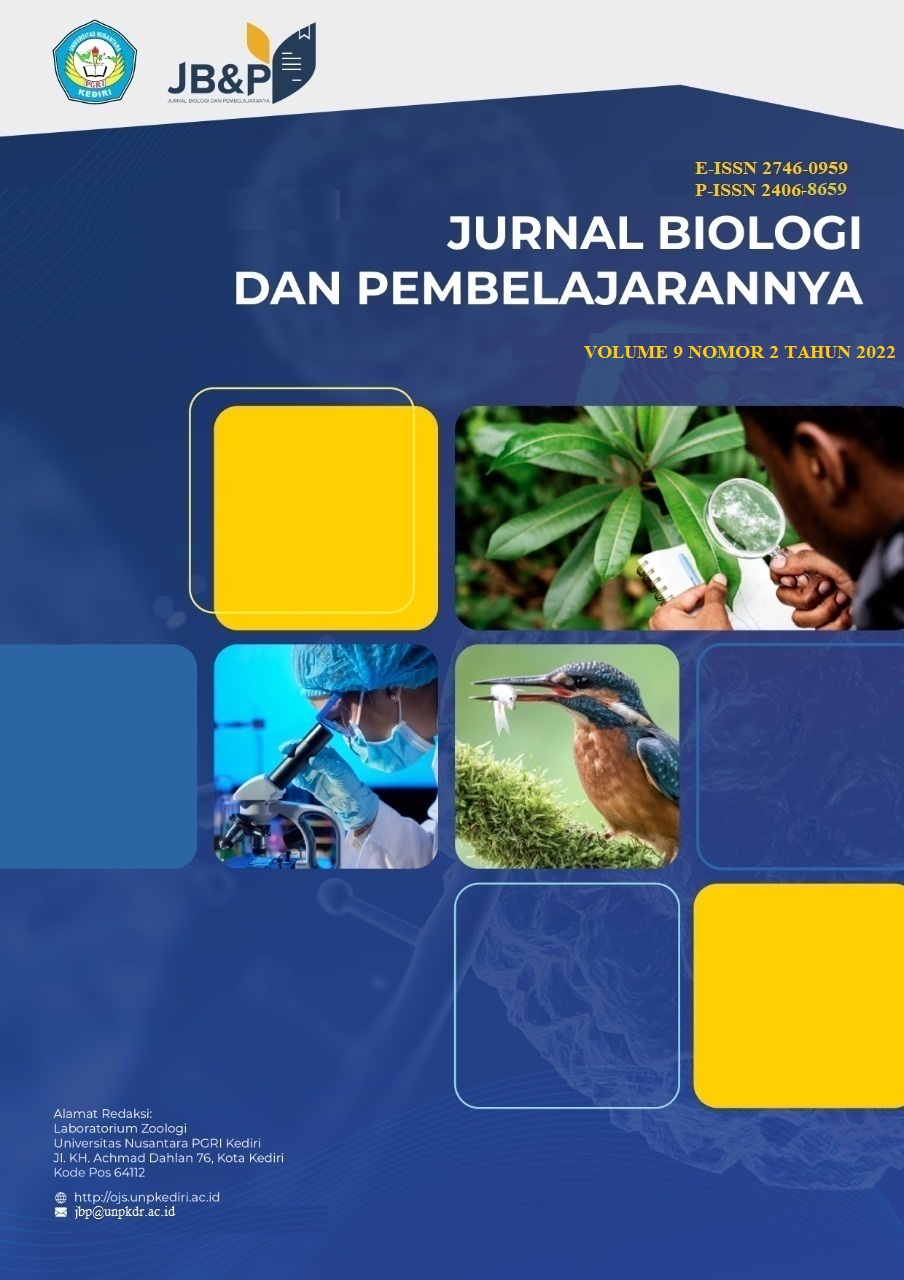Pengujian Flavonoid Total Dan Uji Aktivitas Antioksidan Fraksi Aktif Daun Akar Kaik-Kaik (Uncaria cordata (Lour.) Merr) Yang Berpotensi Sebagai Obat Diare
DOI:
https://doi.org/10.29407/jbp.v9i2.18618Keywords:
Uncaria cordata, total flavonoids, antioxidant activity.Abstract
kar kaik-kaik (Uncaria cordata (Lour.) Merr.) is a medicinal plant used for
generations by the Dayak tribe to treat diarrhea and dysentery. This study aims
to determine the total flavonoid content and antioxidant activity of the active
fraction of kaik-kaik root leaves which have the potential to cure diarrhea. Kaikkaik
root leaf extract was made by maceration using 70% ethanol. Total
flavonoid test was carried out using UV-VIS spectrophotometry with quercetin
standard. The results showed that the ethanol fraction had the highest flavonoid
content, namely9.08 mg QE/g sample,n-hexane fraction of 5.21mg QE/g
sample and ethyl acetate fraction of 3.54 mg QE/g. Testing of antioxidant
activity using the DPPH method. The results showed that the ethanol fraction
had a very strong antioxidant activity of 49.22 ppm, the n-hexane fraction had a
moderate antioxidant activity of 108.22 ppm and the ethyl acetate fraction had a
moderate antioxidant activity of 130.30. The total flavonoid content and
antioxidant activity of the kaik-kaik root leaf extract indicate that the kaik-kaik
root leaf extract has the potential to be developed into herbal medicine to treat
diarrhea.
References
Departemen Kesehatan Republik Indonesia. 2008. Farmakope Herbal Indonesia. Hal 113-5, Departemen Kesehatan Republik Indonesia, Jakarta.
Erwin. 2020. Review Kandungan Metabolit Sekunder Beberapa Tumbuhan Uncaria Yang Terdapat Di Kalimantan Timur. Jurnal Atomik. 05(1):18–24.
Haris, M. 2011. Penentuan Kadar Flavonoid Total dan Aktivitas Antioksidan Dari Daun Dewa (Gynura pseudochina (Lour) DC) Dengan Spektrofotometer UV-Visible. Skripsi. Fakultas Farmasi universitas Andalas, Padang.
Noorcahyati. 2012. Tumbuhan Berkhasiat Obat Etnis Asli Kalimantan. Balai Penelitian dan Pengembangan Kehutanan. Kementerian Kehutanaa.
Nugroho, A. 2017. Teknologi Bahan Alam. Lambung Mangkurat University Press.
Putri, T.U. 2014. Uji Aktivitas Antioksidan Ekstrak Daun Bayur Elang (Pterospermium diversifolium) dengan Metode DPPH (1,1-diphenyl-2-picrylhydrazil) dan Identifikasi Metabolit Sekunder Pada Fraksi Aktif. Skripsi. FKIP Universitas Bengkulu.
Rachmatiah, T., Syafriana, V. dan Helma, F. 2020. Aktivitas Antibakteri Ekstrak Etanol Daun Akar Kaik-Kaik (Uncaria cordata (Lour.) Merr.) terhadap Staphylococcus aureus dan Salmonella typhi. Jurnal Ilmiah Kesehatan, 19(03);107–114.
Sari, A. K. 2015. Penetapan Kadar Polifenol Total, Flavonoid Total, dan Uji Aktivitas Antioksidan Ekstrak Etanol Daun Sirsak (Annona muricata) Dari Jember Pada Ketinggian Tanah Yang Berbeda. Fakultas Farmasi. Universitas Jember.
Sudarwati, T.P.L, Ferrnanda, M.A.,Hanny, F. 2017. Aplikasi Pemanfaatan Daun Pepaya (Carica Papaya) Sebabai Biolavarsida Terhadap Larva Aedes aegypti. Skripsi.. FKIP Universitas Bengkulu. Bengkulu.
Winarsi, H. 2017. Antioksidan Alami dam Radikal Bebas. Kanisius. Yogyakarta.
Wiyono. 2008. Penyakit Tropis Epidemologi, Penularan, Pencegahan dan
Pemberantasannya. Erlangga. Jakarta.
Molyneux P. 2004. The Use Of The Stable Free Radical Diphenylpicrylhydrazyl (DPPH) for Estimating Antioxidant Activity, Songklanakarin J. Sci. Technol. 26 (2): 211-219
Downloads
Published
Issue
Section
License
Authors who publish with this journal agree to the following terms:
- Copyright on any article is retained by the author(s).
- The author grants the journal, right of first publication with the work simultaneously licensed under a Creative Commons Attribution License that allows others to share the work with an acknowledgment of the work’s authorship and initial publication in this journal.
- Authors are able to enter into separate, additional contractual arrangements for the non-exclusive distribution of the journal’s published version of the work (e.g., post it to an institutional repository or publish it in a book), with an acknowledgment of its initial publication in this journal.
- Authors are permitted and encouraged to post their work online (e.g., in institutional repositories or on their website) prior to and during the submission process, as it can lead to productive exchanges, as well as earlier and greater citation of published work.
- The article and any associated published material is distributed under the Creative Commons Attribution-ShareAlike 4.0 International License













